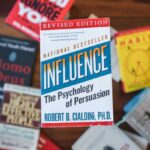Some recent research has caused me to completely rethink my marketing strategy. For years, I have heard that email marketing has a greater Return On Investment (ROI) than social media marketing. However, with my social media fans measured in the thousands and my email subscribers measured in the hundreds, I was sure that trying to grow my email subscribers could never achieve anywhere near the same results as reaching my thousands of social media followers through organic means. After all, this strategy follows the principles of cumulative advantage, right?
This strategy felt especially true when I considered the number of people with Facebook accounts and the frequency in which reports indicate folks check their social media accounts each day. All this coupled with the fact everyone I know at some point complains about the volume of spam email they receive, I thought for sure that social media posting has to have a much higher ROI than email, and ergo is rapidly replacing email as the best ROI marketing strategy.
Then I discovered a disturbing fact that made me reconsider everything.
According to Campaign Monitor, 90% of all emails get past a person’s spam filters and get delivered to your subscriber’s email inbox, whereas only 2% of your Facebook fans see your posts in their news feed. This means your message is 45 times more likely to be delivered using email than Facebook.
What I have only recently become aware of is that Facebook intentionally limits the number of times your posts appear in the news feeds of your fans based on what they call EdgeRank. The way I understand it, if your fans do not interact with your content, Facebook assumes they are not interested and begins to remove your posts from their newsfeed. Remember Facebook continues to try to make the content each person sees in their newsfeed more relevant to them. So, if you like what you see on Facebook be sure to like, comment, or share it or in the future, you may no longer see it in your newsfeed.
Don’t forget to Like us on Facebook so you can continue to see our content.
Moreover, let’s not forget that Facebook has a monetary incentive to drive brands towards their paid advertising options. So, if your Facebook fans do not give you organic reach by interacting with your content, a business must pay Facebook to get their message in front of fans.
Let’s look at a case study to illustrate this idea more clearly. Imagine your business has 5,000 Facebook fans and only 500 email subscribers. Based on the data from Campaign Monitor, only about 100 Facebook fans (2%) will have a chance to even see your posts while 450 (90%) email subscribers would see it.
Therefore, it appears that writing quality content and exposing it to your fans using social media channels like Facebook is not an effective strategy by itself. To open up the Facebook bottleneck, you need to make your content more shareable or consider using their paid advertisement to extend your reach beyond the meager 2%.
To take advantage of the power of email marketing, you must first develop a list of email addresses. Driving email sign-ups using giveaways and other similar tactics seems like the ticket to exchanging value for the contact’s email. Don’t try to shortcut this process by buying an email list.
The first step in developing an email list is to build an opt-in form.
When someone completes your opt-in form and gives you their email in exchange for some giveaway or subscribes, be sure to send them an email thanking them for signing up. This is a great time to use automated tools.
If possible, segment your list of clients. For example, are some of your clients one-man shops while others are employer-based businesses? Do they sell to other business (B2B) or to individual consumers (B2C)? By segmenting your client lists into these categories, you can create more targeted content that is more likely to be opened and read.
Choose an email publishing schedule and stick to it. Weekly is a common and acceptable frequency for email marketing messages. If you send your email messages more than once per week, you risk people opting out.
Remember, different customers have different buyer psychologies, so you need to appeal to each of the 4 types of buyer psychologies as part of the sales email.
Don’t make the emails too long since people do not like to read long emails. Get to the point quickly and don’t forget to have a call to action in the email. Also, be sure to include links to your other content to drive organic traffic back to your website when possible.
Since I’m a flaming dyslexic, I make sure that I do a spell and grammar check to make sure my email is not full of errors. I find it helpful to write a draft one day and review and send it the following day. I may even use a proofreader for frequently used email messages.
As with all content marketing, you should spend almost as much time crafting the email’s subject line as the email’s content to make sure the subject is compelling enough to encourage your clients to open up the email and read its content. I like to use isitwp.com free headline analyzer tool as it reviews your draft headlines for common, uncommon, emotional, and power words. Afterwards, it gives you a score so you can compare several versions of your headline to see which one has the best structure, grammar, and readability.
So, while social media like Facebook has its strengths, email is the proven marketing channel with a greater reach that should not be ignored.
Do you have an email marketing strategy?












